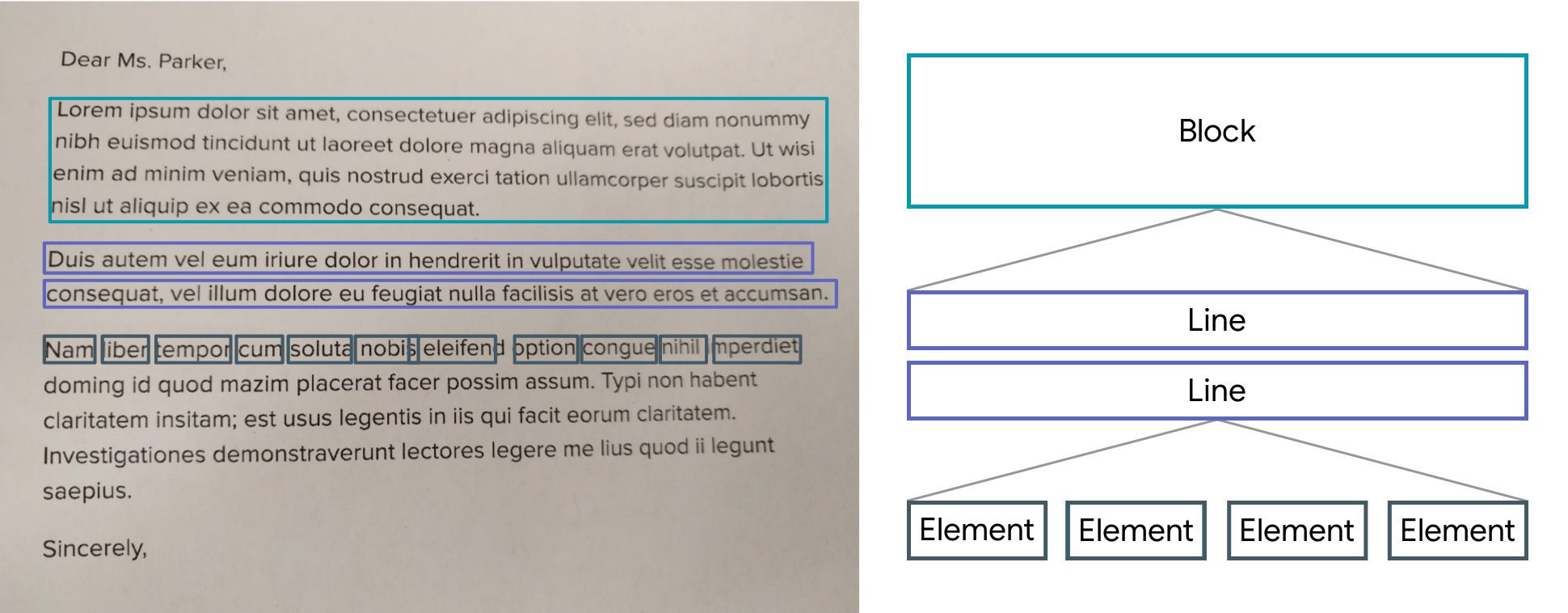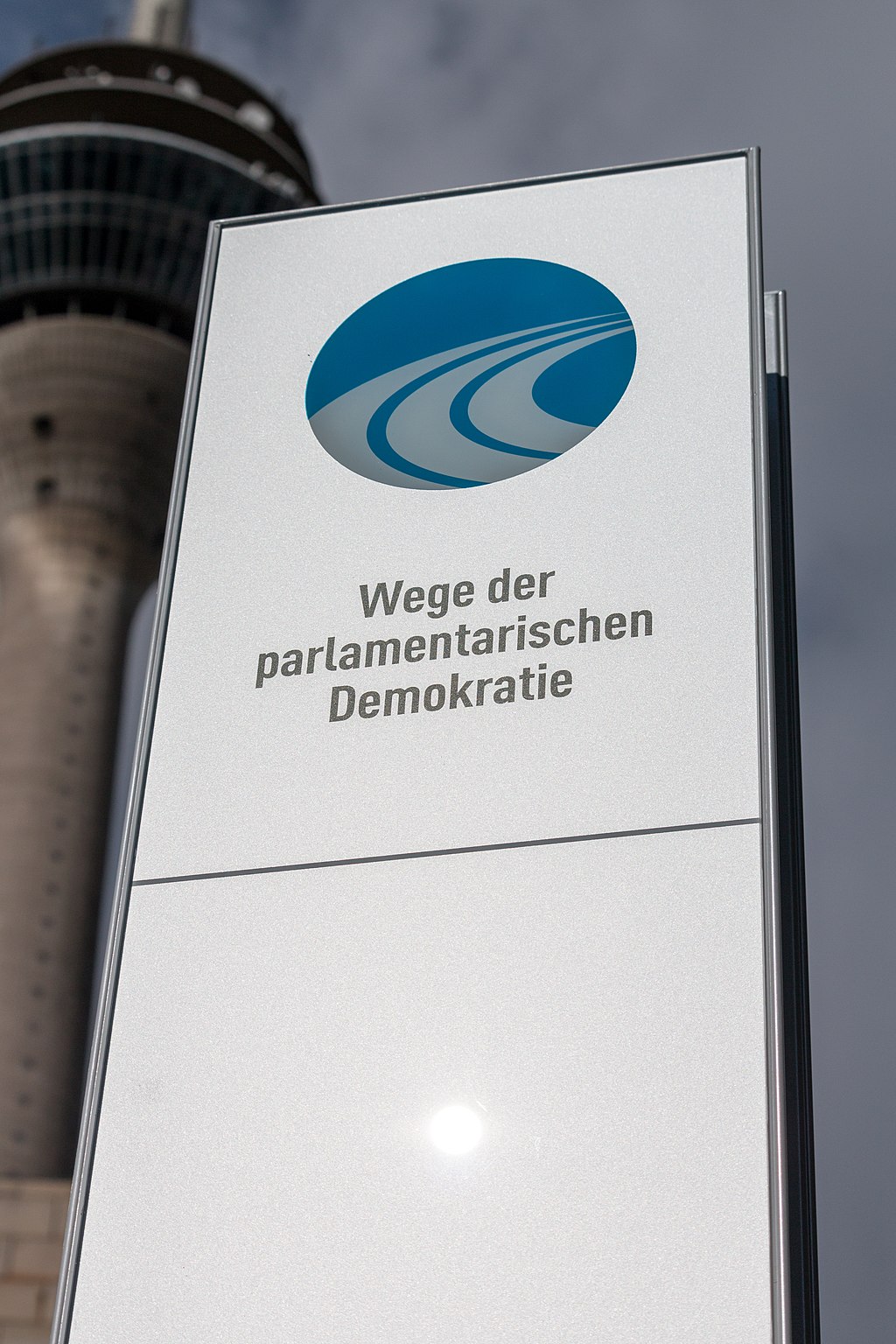
La API de reconocimiento de texto del Kit de AA v2 puede reconocer texto en cualquier grupo de caracteres en chino, devanagari, japonés, coreano y latino. La API también se puede usar para automatizar tareas de entrada de datos, como el procesamiento de tarjetas de crédito, recibos y tarjetas de presentación.
Funciones clave
- Reconocer texto en varios idiomas y alfabetos: Admite el reconocimiento de texto en alfabetos chinos, devanagari, japonés, coreano y latinos.
- Analiza la estructura del texto. Admite la detección de símbolos, elementos, líneas y párrafos.
- Identificar el idioma del texto Identifica el idioma del texto reconocido
- Reconocimiento en tiempo real: Puede reconocer texto en tiempo real en una amplia variedad de dispositivos.
Estructura del texto
El Reconocedor de texto segmenta el texto en bloques, líneas, elementos y símbolos. A grandes rasgos:
un Block es un conjunto contiguo de líneas de texto, como un párrafo o una columna.
Una Línea es un conjunto contiguo de palabras en el mismo eje.
Un elemento es un conjunto contiguo de caracteres alfanuméricos ("palabra") en el mismo eje en la mayoría de los idiomas latinos o una palabra en otros.
Un símbolo es un carácter alfanumérico único en el mismo eje en la mayoría de los idiomas latinos, o un carácter en otros
La imagen a continuación destaca ejemplos de cada uno de ellos en orden descendente. El primer bloque destacado, en cian, es un Bloque de texto. El segundo conjunto de bloques destacados, en azul, son las líneas de texto. Por último, el tercer conjunto de bloques resaltados, en azul oscuro, son Palabras.

Para todos los bloques, líneas, elementos y símbolos detectados, la API muestra los cuadros de límite, los puntos de esquina, la información de rotación, la puntuación de confianza, los idiomas reconocidos y el texto reconocido.
Resultados de ejemplo

Foto: Dietmar Rabich, Wikimedia Commons, "Düsseldorf, Wege der parlamentarischen Demokratie -- 2015 -- 8123", CC BY-SA 4.0
| Texto reconocido | |
|---|---|
| Texto | Wege der parlamentarischen Demokratie |
| Bloqueos | (1 bloque) |
| Bloque 0 | |
|---|---|
| Texto | Wege der parlamentarischen Demokratie |
| Marco | (296, 665 - 796, 882). |
| Puntos de esquina | (296, 719), (778, 665), (796, 828), (314, 882) |
| Código de idioma reconocido | de |
| Líneas | (3 líneas) |
| Línea 0 | |
|---|---|
| Texto | Miércoles |
| Marco | (434, 678 - 670, 749) |
| Puntos de esquina | (434, 705), (665, 678), (670, 722), (439, 749) |
| Código de idioma reconocido | de |
| Puntuación de confianza | 0,8766741 |
| Grado de rotación | –6.6116457 |
| Elementos | (2 elementos) |
| Elemento 0 | |
|---|---|
| Texto | Mie |
| Marco | (434, 689 - 575, 749) |
| Puntos de esquina | (434, 705), (570, 689), (575, 733), (439, 749) |
| Código de idioma reconocido | de |
| Puntuación de confianza | 0,8964844 |
| Grado de rotación | –6.6116457 |
| Elementos | (4 elementos) |
| Símbolo 0 | |
|---|---|
| Texto | W |
| Marco | (434, 698 - 500, 749) |
| Puntos de esquina | (434, 706), (495, 698), (500, 741), (439, 749) |
| Puntuación de confianza | 0,87109375 |
| Grado de rotación | –6.611646 |

